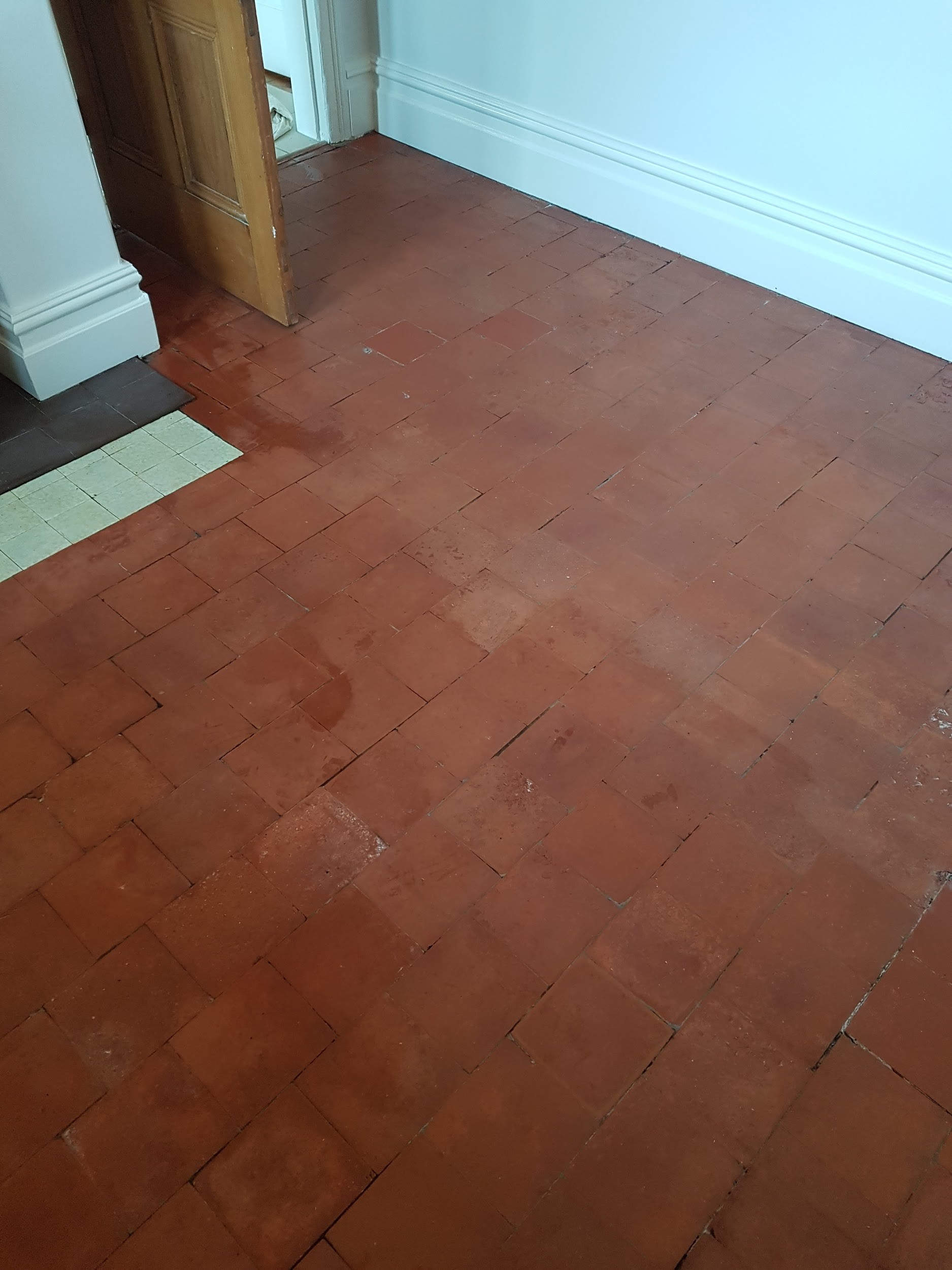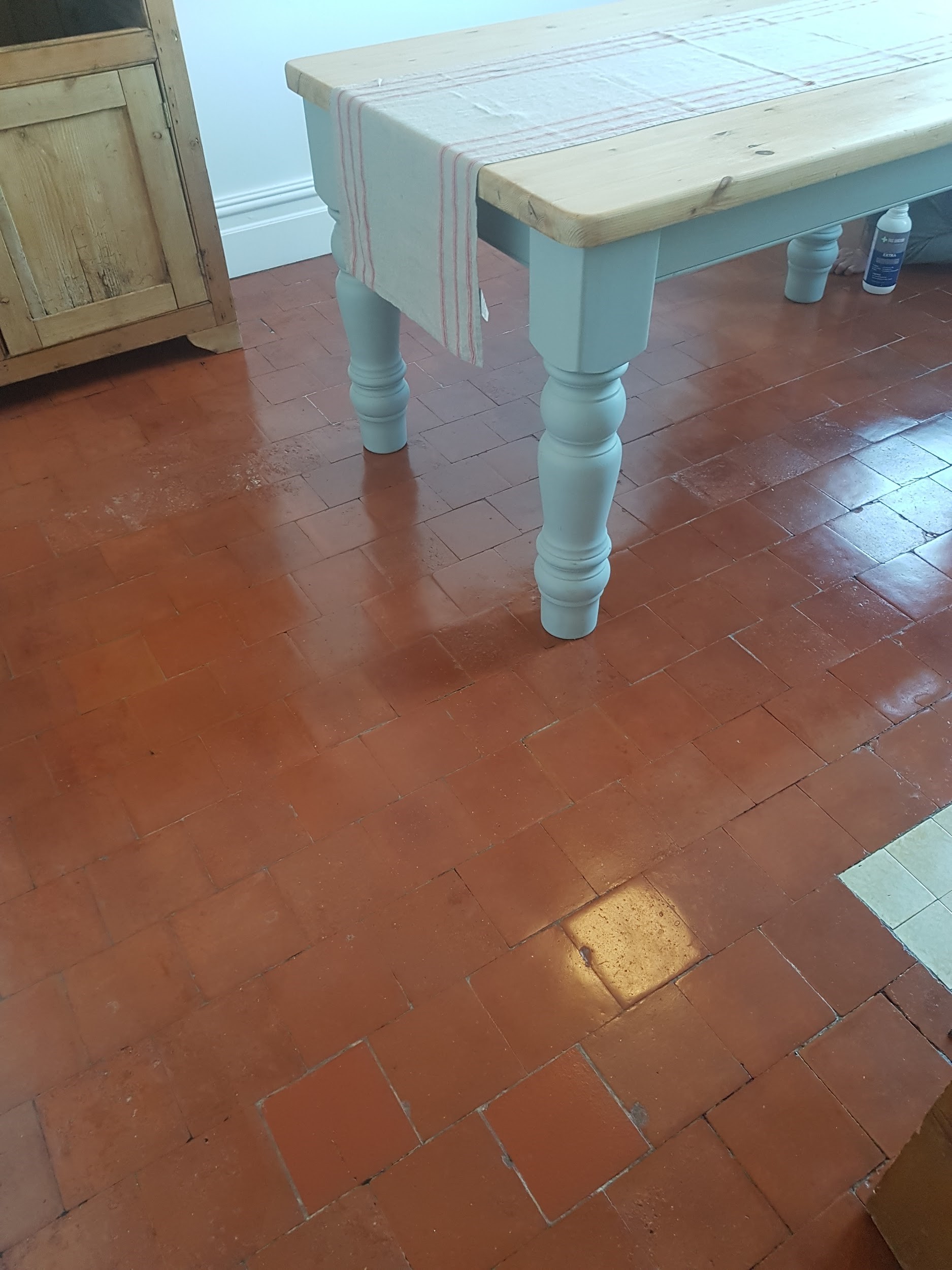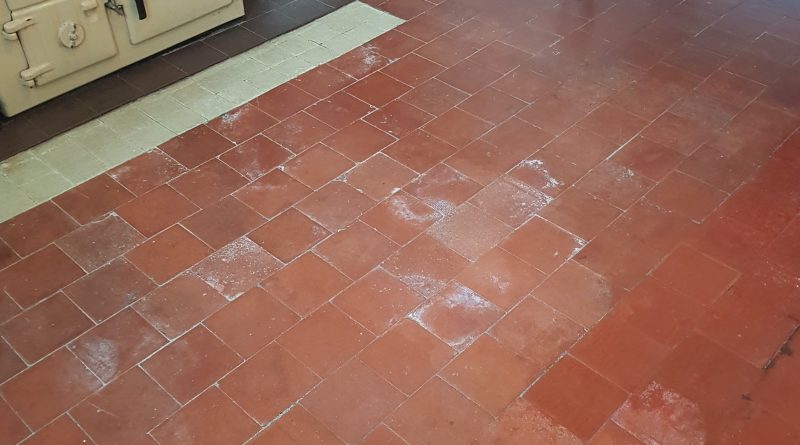Dealing with Efflorescence on Quarry Tiles in Goostrey, East Cheshire
Pictured below is an old Quarry tiled floor in the Kitchen of a house in the small farming village of Goostrey. I went over to survey the floor at the request of the owner who felt it was overdue a deep clean and seal.
It was a classic floor that suited the kitchen and its Aga well however I’m sure it could tell a story. There were patches of white efflorescent salts in front of the Aga itself and another section of floor where the tiles were a slightly darker shade. I assume some replacements were made in this section at some point in the past. Efflorescence occurs when damp in the subfloor rises through the tiles depositing white alkaline salts on the surface of the tile as the moisture evaporates. This is quite a common problem in older properties where no damp proof membrane is present under the floor and more so where you have a warm Aga heating the space and encouraging evaporation.
As per usual the floor was survey noting all the points above and then I carried out a test clean on a small part of the floor. This helps me understand what products and process I need to follow in order to renovate the floor and thereby product an accurate quote for the work. This went well and the owner was happy for us to process so we agreed a date to start the work which would take two days.
Cleaning a Quarry Tiled Floor
To clean the floor and strip off any remaining sealer I first created a strong dilution of Tile Doctor Remove and Go which was sprayed onto the tiles and then left to soak in. Remove and go is a powerful stripper and cleaner that is safe to use on tile and stone. The product is designed to loosen paint stains, adhesives and many types of urethane and wax coatings so they can be easily removed.
After thirty minutes the solution was scrubbed into the tile and grout using a weighted rotary machine fitted with a black scrubbing pad and running at a slow speed. The resulting cleaning slurry was rinsed off with water and then extracted from the floor using a wet vacuum. I repeated this process until I was confident the tiles were clean and free of old sealer.
The next step was to neutralise the alkaline salts in the floor which could later lead to efflorescence by treating it to an acid wash using Tile Doctor Acid Gel. The gel was left to soak in for five minutes before washing it off using the wet vacuum to get the floor as dry as possible.

Sealing a Quarry Tiled Floor
The floor was left to dry out overnight and the next morning I returned to the property and took some readings from the floor with a damp meter. It’s important to check the floor is dry before sealing because any excess moisture can cloud the sealer and prevent it from doing its job properly.
Once satisfied that the floor was dry, I applied a single coat of Tile Doctor Colour Grow which is a breathable impregnating sealer that enhances colour and protects from within. I left the floor to dry for one hour and then followed up with four coats of Tile Doctor Seal and Go which provides both a robust surface seal and a long-lasting low sheen finish. The new sealer transformed the tiles and gave the whole floor a uniform appearance

The customer was very impressed with our work and asked if we can come back later to remove the white tiles in front of the Aga and replace with Quarry tiles to match the rest of the floor.

Source: Quarry Tile Cleaning and Sealing Service in Goostrey, East Cheshire
